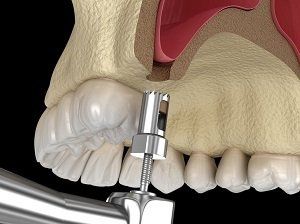Considering Dental Implants - A Sinus Lift Can Help!
- By Mary Marks
- •
- 20 Jul, 2021
- •

If you have one or more missing teeth and you have postponed the visit to the dentist for years, most likely the jaw bone has resorbed. The good news is that you do not have to think about prostheses, you can enjoy a completely new tooth, a beautiful smile and a correct mastication with the help of dental implants.
In patients with insufficient bone volume of the upper jaw,
the solution is the sinus lift procedure, i.e. lifting the membrane of the
maxillary sinus, to make room for bone grafting. Due to this bone addition, the
implant has a stable base and is properly supported. Be sure to set appointments with your dentist athttps://coloradosedation.comto get a good start from this happening in the first place.
What does sinus lifting mean?
It is a bone addition surgery for the upper jaw, in the area of the molars and premolars, if one or more teeth in this area are missing. As a result of tooth loss, the patient no longer has enough bone for the dental implant (the artificial root of the future tooth) to be properly inserted and supported.
Therefore, a bone graft is added for the upper jaw, more precisely under the maxillary sinuses. The surgeon uses the sinus membrane to subsequently insert the implant:
· the sinus membrane is raised and a space is obtained
· the bone is added to the resulting cavity
· the implant thus gains adequate support due to the bone support obtained by the sinus lift procedure.





Although oral sedation dentistry Highlands Ranch is one of the optionsavailable for managing anxiety and discomfort during oral surgery, you certainly do not need to use it all the time. As a matter of fact, the exact type of sedation or anesthesia that you receive during oral procedures may depend on various factors, such as the complexity of the procedure, your medical problems, as well as your doctor’s preferences.
There can be several different levels of sedation that can be used in oral surgery. Local anesthesia is one of them. This involves injecting anesthetic medication into the specific area where the surgery will take place. It numbs the area and is often used for less invasive procedures.
Oral sedation involves taking medication in the form of a pill to induce a state of relaxation and drowsiness. The patient is still conscious, but he/she may not be fully aware of the procedure. At any rate, sedation helps him/her get rid of anxiety.
In the case of intravenous sedation, medication is administered through a vein, which induces a deeper state of sedation than oral sedation. Patients may still be conscious, but they are less aware of their surroundings and may not remember the procedure.





